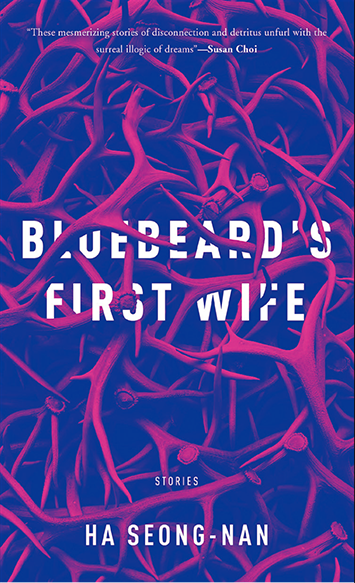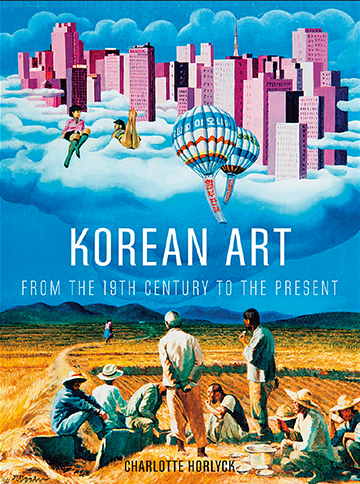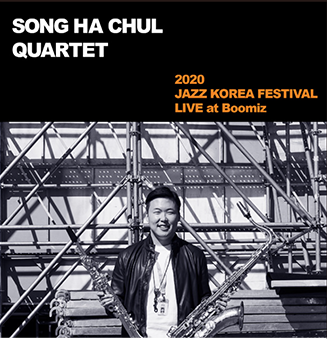The Dark Abyss of Human Relationships
Bluebeard’s First Wife
By Ha Seong-nan, Translated by Janet Hong, 229 pages, $15.95, New York: Open Letter [2020]

This short story collection by Ha Seong-nan is a journey into the darkest depths of human relationships. The prose is often dream-like, painting lyricalportraits of loss, isolation and despair, eschewing a rigid narrative structure in favor of a gossamer web of vignettes designed to evoke rather than proclaim.Thus we feel the impact of her tales on a deeply emotional level, sharing in the pain and heartbreak that many of her characters experience.
Ha’s characters have complex relationships with the world around them. This world is not simply a cruel, impersonal force that will crush the individual without a second thought; it is very clearly made up of other human beings, wherein lies the great horror of existence. Sometimes these people aredistant “others,” such as children running around in the apartment upstairs, city poachers terrorizing a small mountain village, or a fiancé’s mysteriousgroup of friends. At other times, they are those closest to us: husbands, wives, daughters, sons. Whether these “others” are near or far, a major theme running through this collection is our inability to ever truly know anyone else. Even those we think we know the best may be harboring some dark secret −perhaps we would just rather not know and stay safe in our delusions.
There is an argument to be made for the latter interpretation, given the actions of the protagonists themselves. A policeman dispatched from Seoulto an isolated mountain village treats the villagers as strange and inscrutable, making no effort to become part of their community. A couple that hasmoved to the outskirts of Seoul in pursuit of an idyllic lifestyle with a green lawn cares more about their dog, running around on that grass, than theirdisabled son, who cannot even walk. In these characters, we can see reflected our human tendency to shun that which does not live up to our dreams orexpectations. While we would be hard pressed to call these and other protagonists sympathetic, we also cannot fail to recognize that they are, after all, onlyhuman.
Another thematic thread that runs through the collection is the “outskirts.” Most of the stories are set either on the outskirts of Seoul or farther off in thecountryside. Even those tales that start in the city often move beyond the city limits. This migration to the margins may happen for any number of reasons.Whatever the case, once we leave the city, we find ourselves in an uncertain liminal space where the usual rules of society do not apply.Ha’s tales will likely leave you unsettled, but with much to ponder.Because they often refuse to drive straight at the point, or to even claim that there is a single point, they will reward continued exploration and repeatedvisits.
A Welcome Study of a Significant Era of Korean Art
Korean Art – From the 19th Century to the Present
By Charlotte Horlyck, 264 pages, $60.00, London: Reaktion Books [2017]

This book doesn’t attempt to be, in the author’s words, a “definitive, encyclopaedic reading” of Korean art during the 100-odd years from theend of the 19th century to the beginning of the 21st century. Instead, it focuses on important milestones in this tumultuous time in Korea’s history. Throughout it all, Horlyck delves into how art has related to the search for a Korean identity.
The first chapter illuminates the final years of the Joseon Dynasty, when Korea emerged as a modern nation and art became increasingly politicized. The second chapter discusses the colonial period, during which the perception of art shifted from something monopolized by theelite to something that could belong to everyone. The third chapter deals with the development of socialist realist art in North Korea after WorldWar II, driven by the ideology of Kim Il-sung. The fourth chapter parallels the third, covering the same period in the South, where abstract art came to the fore. The fifth chapter introduces minjung art, or the “art of the people,” in the 1970s. The sixth and final chapter sheds light onchanges in the way Korean artists have been approaching their task over the past few decades.
Taken as a whole, the book is a welcome introduction to a period in Korean art that might not get due attention. It also deserves recognitionas a rare endeavor in English.
Soothing Tones of Familiarity and Freshness
2020 JAZZ KOREA FESTIVAL LIVE at Boomiz
Song Ha Chul Quartet, CD (27 minutes), Streaming for free on YouTube and iTunes, Seoul: Gatefor Music & Art [2021]

This EP by the Song Ha Chul Quartet, released in February 2021, is a liverecording of a performance at the Jazz Korea Festival, hosted by the KoreanCultural Center in Ankara, Turkey. The festival was held online in November2020 due to the COVID-19 pandemic.With its clean, pastel tones, the album is not just for fans of “Koreanjazz,” but for everyone familiar with jazz, and even newcomers.The first track is “Straight Life,” which is also the title track of the quartet’s 2017 debut album. Following Suh Soo-jin’s funky drum performance,Song Ha-chul’s saxophone announces its presence with a bold, distinct soundreminiscent of Hank Mobley.“Marionette,” featuring the saxophone played over Lim Chae-sun’sdreamy piano, is superbly beautiful, with the atmosphere of Stan Getz’s“Manha De Carnaval.” Like the familiar passage of time, worn down dayafter day, the piece drifts to a lonely end.In “Going Up,” Lee Dong-min makes a placid opening with his bass,and Song Ha-chul’s saxophone rushes in with a sound as puffed up as cottoncandy. The next song is “Somebody’s Gold Fishery,” where the saxophone’sagility and warmth combine assertively to take the mood to its peak.
Charles La ShureProfessor, Department of Korean Language and Literature, Seoul National University
Ryu Tae-hyung Music Columnist